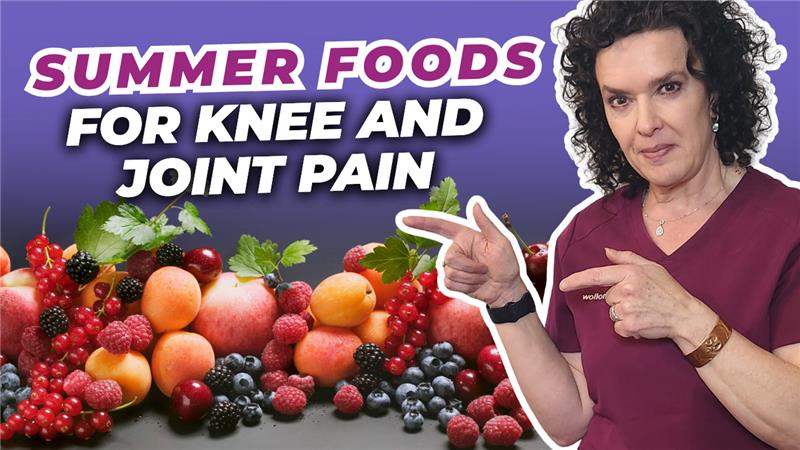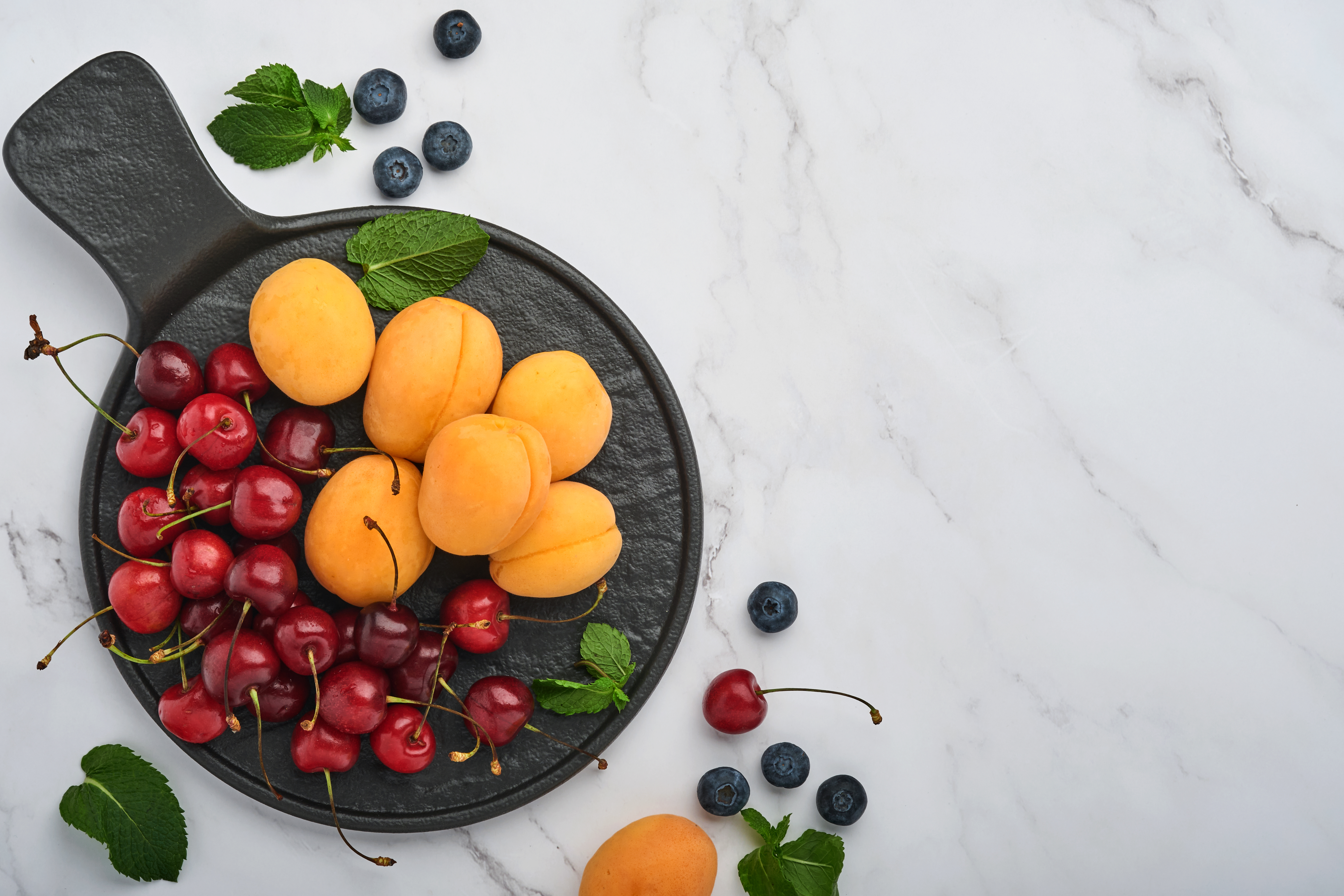
Summer Foods For Knee Pain Relief
Can the right summer foods actually help ease your joint and knee pain? While most people turn to pills or physical therapy, there’s a natural and often overlooked solution sitting right in your kitchen.
In this episode, we dive into how seasonal fruits and vegetables can help reduce inflammation in your joints and spine. Whether you're struggling with achy knees after a walk or stiff shoulders from daily stress, what you eat this summer could make all the difference. No gimmicks, just real food with real benefits.
Curious which foods made the list and how to add them to your daily routine without much fuss? Dive in now and discover how summer’s harvest could be your secret weapon against joint pain.
Episode Video

The Best Summer Foods for Knee and Joint Pain Relief
Summer is a great time to take better care of your body, especially when it comes to joint and spine health. While many people reach for medications or supplements to manage pain, there is growing evidence that specific foods can make a noticeable difference in reducing inflammation and discomfort. The knees, shoulders, and lower back are common areas where chronic pain and stiffness can increase during hotter months due to dehydration, overuse, or simply aging.
Thankfully, nature has an answer. Some of the freshest and most flavorful summer produce also happen to be powerful anti-inflammatory tools. Rich in antioxidants and nutrients, these seasonal fruits and vegetables can play an important role in managing joint pain and promoting better mobility. The following five foods have been shown to offer real benefits for those experiencing joint or knee pain.
Berries Pack a Punch Against Inflammation and Joint Pain
Berries are small but mighty when it comes to nutritional power. Blueberries, raspberries, blackberries, and boysenberries are all loaded with antioxidants, especially anthocyanins, which are compounds that help protect the body’s cells from damage. These antioxidants not only give berries their rich colors but also actively reduce inflammation that contributes to joint stiffness and pain.
For individuals managing chronic knee pain or arthritis, incorporating just half a cup of fresh berries daily can provide real support. These fruits are easy to enjoy in smoothies, salads, or simply eaten by the handful. They can also be frozen and blended for a cooling treat during hot days, making them one of the most versatile and effective summer foods for joint pain.
Cherries Cool Down Your Body and Your Joints
Cherries are a seasonal standout and one of the most studied fruits for their anti-inflammatory properties. Like berries, cherries are rich in anthocyanins, which have been shown to reduce levels of C-reactive protein, an indicator of inflammation in the body. This makes them particularly helpful for people dealing with joint pain or recovering from physical activity.
Fresh cherries can be enjoyed right out of the fridge, frozen for a cool snack, or blended into smoothies and salads. Their flavor pairs well with feta cheese, mint, and balsamic vinegar, offering a combination that is both refreshing and therapeutic. For anyone dealing with chronic pain in the knees or spine, cherries offer a natural way to help the body recover while still enjoying seasonal flavors.
Watermelon Hydrates and Heals with Lycopene
Watermelon is more than just a summertime treat. It is rich in water content, which supports hydration and helps reduce stiffness in joints caused by heat or dehydration. More importantly, watermelon contains lycopene, an antioxidant known to help reduce inflammation and protect cartilage. Lycopene is often associated with tomatoes, but watermelon is a great alternative for individuals who avoid nightshades.
This fruit can be eaten in cubes, frozen into granita or popsicles, or blended with mint for a hydrating slush. Its natural sweetness makes it an excellent post-workout option, especially for those recovering from joint or muscle strain. Including watermelon regularly during the summer can make a meaningful difference for those managing joint discomfort or looking to support spine health.
Stone Fruits Fight Inflammation and Taste Like Dessert
Peaches, plums, nectarines, and apricots fall under the category of stone fruits. These are rich in vitamins A and C, fiber, and several plant compounds that reduce oxidative stress and inflammation. Their high antioxidant content helps protect joint tissue and may improve flexibility and comfort, especially in weight-bearing joints like the knees.
Stone fruits are also easy to enjoy. They can be eaten raw, added to fruit salads, blended into smoothies, or grilled to bring out their natural sweetness. Grilled peaches with a drizzle of honey or a spoonful of yogurt make for a delicious dessert that also supports joint health. When incorporated into a balanced diet, stone fruits can help those dealing with joint pain find relief in a natural and enjoyable way.
Zucchini and Summer Squash Are Anti-Inflammatory and Versatile
Zucchini, often called summer squash, is a vegetable that is high in vitamin C and beta-carotene. These nutrients help the body fight inflammation and support the immune system, both of which are important for people managing chronic pain in the spine or joints. Zucchini is also low in calories and easy to prepare, making it a smart addition to summer meals.
Whether grilled, roasted, or sautéed, zucchini holds its texture and flavor well. When combined with olive oil and a pinch of salt and pepper, it becomes a simple but powerful anti-inflammatory side dish. Adding zucchini to your weekly meals is an easy step toward improving joint comfort and reducing daily stiffness.
Final Thoughts
Inflammation is one of the root causes of joint pain, and the foods you eat can either fuel or fight that inflammation. By choosing seasonal fruits and vegetables like berries, cherries, watermelon, stone fruits, and zucchini, you can take control of your joint health in a natural and sustainable way.
These summer foods not only taste good but also provide real relief when consumed regularly. They hydrate, nourish, and reduce inflammatory markers in the body. For individuals struggling with knee pain, back pain, or overall joint stiffness, incorporating these foods into your routine could be a simple and enjoyable part of your pain management strategy.
If you're ready to take control of your knee pain, click here to discover more about these five effective knee pain home treatments. With these simple steps, you can start your journey towards pain-free knees and a more active lifestyle.
